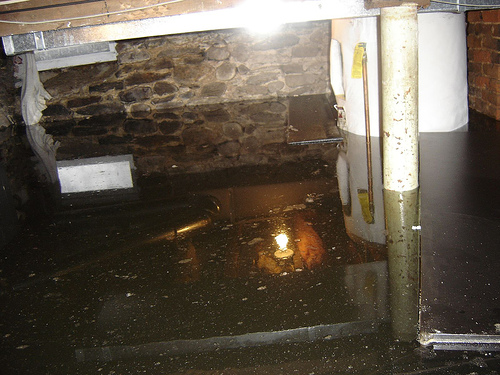THINGS TO GET NERVOUS ABOUT
Yesterday we touched upon finding a home. If you haven’t run out and bought one yet, here are some items to further consider before putting in an offer. Now, if you’re willing to do the sweat equity thing or have the bucks to pay someone else to do it for you, you can restore just about anything.
If not, here’s a list of things to look at before you blow the $ on an inspection. Most of them are not the end of the world, they are just costly repairs:
1. Structural. Settling in older homes is fairly normal. If floors aren’t level, it doesn’t mean the house is falling down. If it bothers you, it is a big deal to fix. You’ll have to take up all the floors and level the joists. Check to see if the floors are REALLY sagging and bouncy in some areas. That could mean wood rot underneath. Are the walls buckling? What kind of beams are there in the basement? Does the foundation need repointing? Adding lally columns and sistering joists may prove a bit difficult for the novice.
2. Roof. Any leaks? Usually it’s the inspector climbing on the roof, not the buyer, so no, you don’t have to go up there. Fine, if you just need some patching. If the roof is terribly old and needs replacing, it could be pricey!
3. Electrical. How many outlets per room? Are they grounded? What does the circuit breaker look like? Can you figure out how many amps? 100 may be sufficient, but 200 would be even better. If you have fuse boxes, it’s OLD! Upgraded electric can be costly, but if you’re gutting a house, that is the time to do it. Running wires through original plaster walls is no fun.
4. Water Control. Check for wet basement and any other water damage. Starting from the top, the gutters may just need cleaning. You should have a look at the exterior pitch of the property (water should be steered away from the house) and drainage. There may be water coming through the basement foundation if it’s not properly sealed. Basement flooding can be remedied with a simple sump pump, but if you want it to be totally dry, it could take some work.
5. Appliances. Will they need replacing? Include the water heater and boiler in this category. See how old they look and if they’ve been serviced regularly.
6. Facade. New brownstone facades start at about $30k. Replacing vinyl with real wood starts at around $20k.
7. Plumbing. Check out the pipes in the basement. They may need replacing if they are corroded.
Those are probably the highest ticket items that you’ll HAVE TO do. Updating kitchens and baths, putting in new floors or restoring plaster is equally expensive, but we’ll file them under cosmetics.

